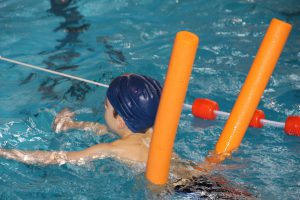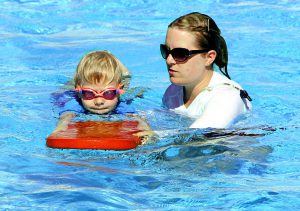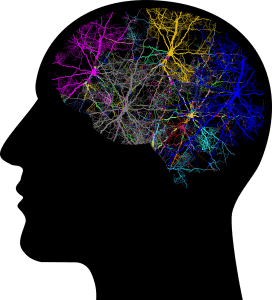As a population, we’re aging. By some estimates, 20% of the country will be over the age of 65 by 2030. But that’s good news! It means that, in general, we’re living longer. Living longer, though, means aging, and with aging comes a variety of annoying issues that can wreak havoc on your quality of life. Eyesight fades, taste buds decrease, joints get stiff and painful, bones get weaker, muscle mass decreases, and memory can get glitchy, among other things.
Experiencing all of this is not fun, and could understandably make you want to sit some things out. In fact, according to the U.S. Department of Health and Human Services, only 35-44% of adults 75 years or older, and 28-34% of adults ages 65-74, are physically active. But don’t fall into the trap of inactivity! The best thing you can do for your body and mind is get out there and get moving. Consider this: according to a study out of Taiwan, as little as 15 minutes of exercise a day could increase your lifespan by as much as three years. Not only that, but certain exercises can even target certain issues related to aging, and engaging in them could boost your chances of aging in a healthy way.
Walk Away from Your Risk of Dementia
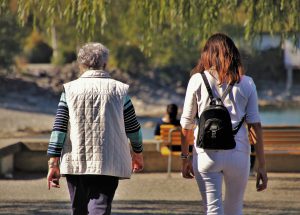
Sometimes, there’s nothing better than a nice walk outside, especially now that spring is finally here! But did you know that walking can do more than boost your mood and help your heart? A study published in the journal Neurology actually found that walking approximately 72 blocks a week halted brain shrinkage and cut the risk for developing cognitive decline and dementia by 50%. That’s an incredible statistic! Add to this a Chinese study of 1,700 adults over age 65 that found that those that regularly exercised (including walking) were 47% less likely to develop dementia, and other studies showing that only 15 minutes of exercising 3 times a week can reduce the risk of dementia by a third, and there’s no reason not to lace up your sneakers and head out for a stroll around town.
Stay Balanced with Tai Chi
Maintaining your balance is vital as you age. A decrease in your balance leads to an increased risk of falling, and with one fall comes a greater risk of more falls. Think about these scary statistics: according to the Centers for Disease Control and Prevention, 3 million older adults are treated for falls each year, with over 800,000 of them needing to be hospitalized. Falling is actually the leading cause of death due to injury, and the most common cause of nonfatal injuries and hospital trauma admissions among people over 65.
There are things you can do to improve your balance, though, and help reduce your risk of falling. In fact, one type of exercise has now been scientifically proven to reduce falls among older adults: Tai Chi. This series of gentle stretches and slow poses that flow from one to the next was pitted against more conventional exercise regimes and other types of stretching and the results were amazing. According to a study published in the journal JAMA Internal Medicine, Tai Chi reduced falls by 58% compared to other stretching exercises, and 31% compared to a more conventional exercise regime. Strength training and cardiovascular exercise are great (as we’ll see later), but when it comes to preventing falls, Tai Chi has it all beat.
Keep Things Moving with Yoga
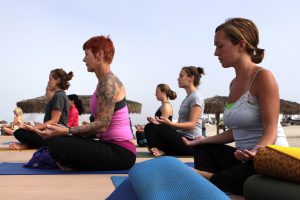
Is your body feeling a bit slow, in more ways than one? You’re not alone: chronic constipation is very common in adults over 60; older adults are 5 times more likely than younger people to be dealing with constipation. So what to do about it? Diet and medication can help, but have you considered trying some simple, gentle yoga poses?
Yes, yoga can help get things moving! There is even research that backs this up. For example, a 2015 study of people with irritable bowel syndrome (IBS) found that yoga is a good way to relieve the main symptoms of IBS, which include constipation. The study also pointed out that yoga might also help address other symptoms that come along with IBS, such as anxiety and fatigue.
Twisting poses, inversions, and forward folds can “massage” your digestive organs, increasing blood flow and oxygen delivery to the area, which could in turn encourage stools to move through your body. Check out some yoga classes aimed at older adults, even if they have to be online, or look up poses that are beneficial to your gut. Just remember to follow instructions carefully, and stop if any pose causes you discomfort.
Jog Your Memory
Running is a great way to improve your cardiovascular health, but did you know that it can also give you a memory boost? Multiple studies, many using mice taking memory tests after being either given unlimited access to an exercise wheel or being kept sedentary, have found that aerobic exercise, like jogging, can actually improve memory function. In fact, one study out of Cambridge University found that regular jogging triggers the growth of gray matter, also known as neurogenesis. Another study from the University of Colorado, which might be particularly interesting to older adults who are more prone to illnesses, found that jogging is also very effective at protecting against memory loss after being sick. And don’t worry: you can do your jogging outside, no hamster wheel required!
Strengthen Your Bones
It’s definitely no secret that thinning of the bones, or osteoporosis, is a major problem among older adults, especially women. While older men can also suffer from osteoporosis or low bone mass (ostepenia), an estimated 35% of postmenopausal women have osteoporosis of the hip, spine, or distal forearm, and roughly 4 in 10 older women in the United States will experience a hip, spine, or wrist fracture at some point.
But no matter your gender, if you have problems with your bones, you could be facing serious injury – so what can you do? Your best defense against bone loss and bone disease is weight-bearing or load-bearing exercise. Studies show that doing this type of exercise for 30 minutes, three times a week, can help you build muscles, which then exert more force on your bones, causing the bones to become stronger and denser. Try lifting weights, walking, or climbing stairs to keep those muscles and bones strong and healthy.
Beat the Swelling
Let’s back up a little. To do many of these types of exercises, you’re going to need to rely on your legs and feet, and if you’re experiencing uncomfortable swelling in that area, or peripheral edema, as many older adults do, you might be less inclined to get started. Increase circulation and help fluid move more easily through your body by trying exercises like leg circles or calf raises.
Ease Pain with a Few Strokes
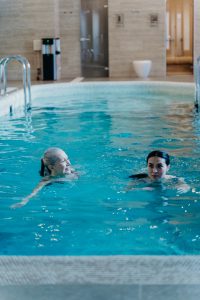
There might be no better exercise for older adults than swimming. And if you’ve got arthritis and are reluctant to do a lot of load-bearing exercise, getting in a nice, warm pool might be just right for you. When you swim, around 90% of your body weight is supported by the water. The relatively weightless environment and support from the water helps to overcome painful movement in the joints that are affected by the arthritis.
Not only is swimming a more comfortable exercise choice for those suffering from joint pain, but it has actually been proven effective at helping seniors deal with their arthritis. According to a 2016 study, swimming helps to relieve pain and improve quality of life among people with knee osteoarthritis just as effectively as walking; another Canadian study of older adults with osteoarthritis of the hip found that swimming reduced their chances of falling and breaking a bone. It’s worth your time to try things like aqua jogging, aqua aerobics, and just some good old fashioned laps!
There’s no doubt that aging comes with certain challenges. Sometimes it seems like your body and mind are being threatened from all sides! But you don’t have to take it all sitting down – in fact, getting up and getting moving can be beneficial in more ways than we previously thought. Try out some of the solutions above to keep you on the road to aging in a healthy and happy way!

